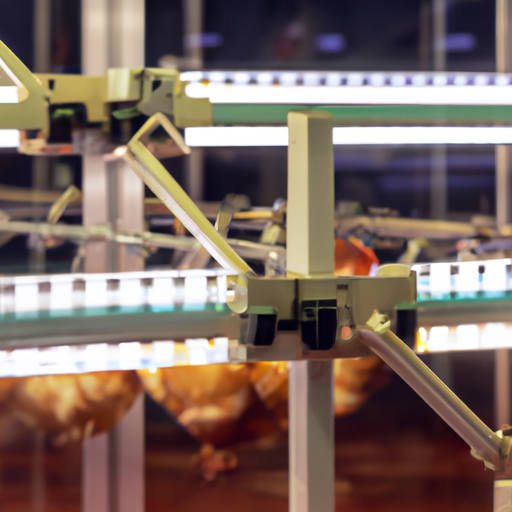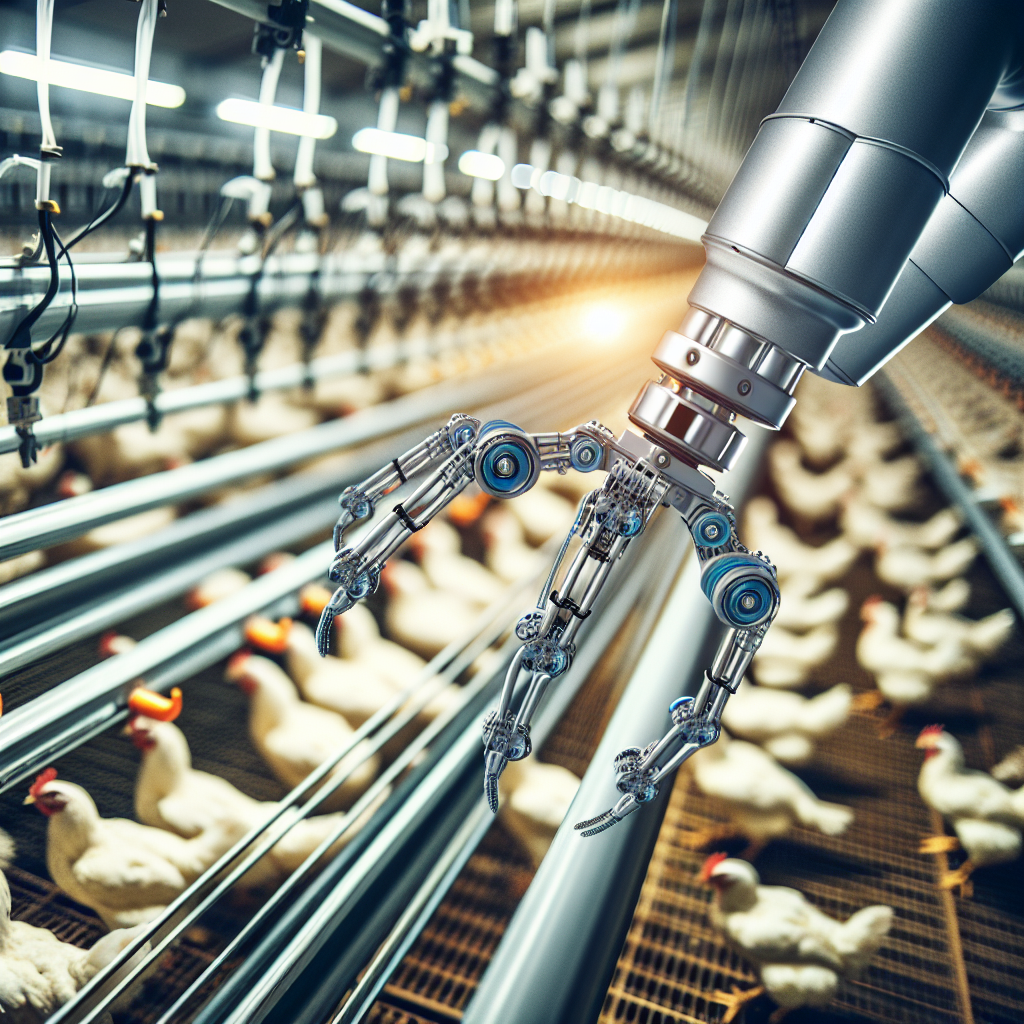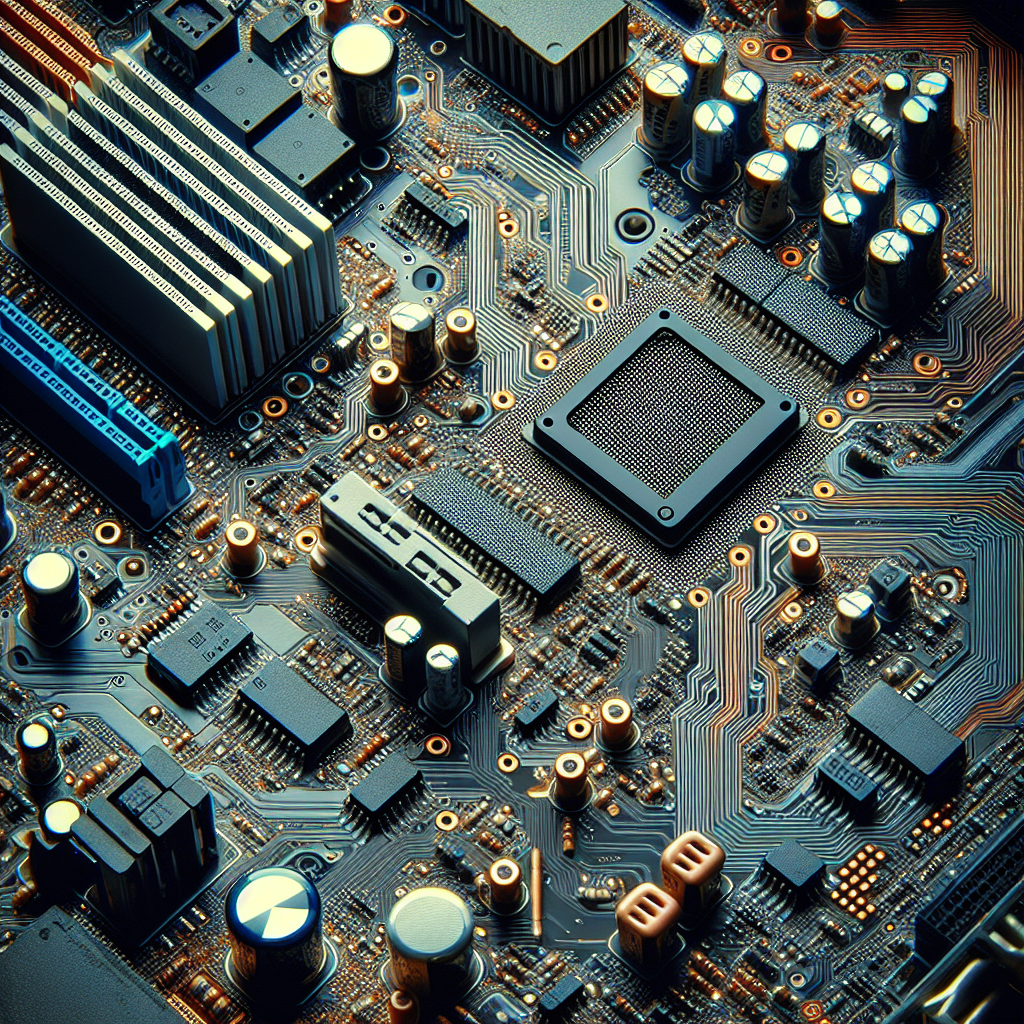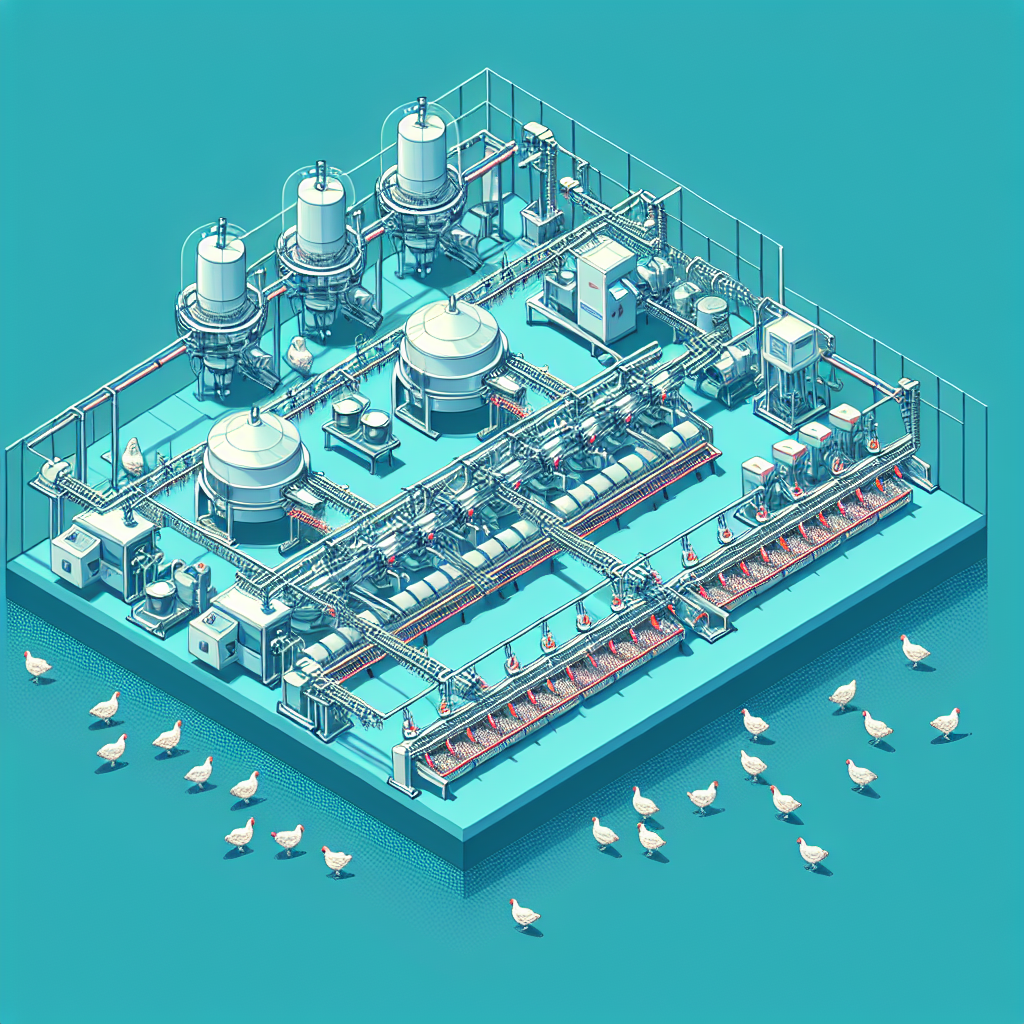If you’re a chicken farmer looking to streamline your operations and increase efficiency, incorporating automation into your practices can be a game-changer. From feeding and watering systems to egg collection and temperature control, automation technology offers a wide range of solutions that can save you time, money, and effort. By implementing automated processes, you can ensure consistent and reliable outcomes while also freeing up your time to focus on other important aspects of your farm. In this article, we will explore various ways you can incorporate automation into your chicken farming practices, revolutionizing the way you approach poultry production.
Automating Feeding Process
Automatic Feeding Systems
Incorporating automation into your chicken farming practices can bring numerous benefits, starting with the feeding process. Automatic feeding systems can revolutionize the way you distribute feed to your flock. By investing in a reliable automatic feeding system, you can eliminate the need for manual feed distribution, saving you time and effort. These systems are designed to dispense precise amounts of feed at regular intervals, ensuring that your chickens receive the proper nutrition they need. With programmable settings, you can easily customize feeding schedules to meet the specific requirements of your chickens at various growth stages. This automation not only promotes healthier and more efficient feeding practices but also reduces wastage and overall feed costs.
Feed Storage Systems
To further optimize your feeding process, consider incorporating automated feed storage systems. These systems allow for bulk storage of feed, minimizing the need for frequent refilling. With automated feed delivery mechanisms, you can ensure a constant supply of feed to the automatic feeding systems, eliminating the risk of feed shortages. This not only provides convenience but also eliminates the manual labor associated with manual feed storage and distribution. By investing in a well-designed feed storage system, you can streamline your feeding process and ensure a steady and efficient supply of feed to your flock.
Automating Watering Process
Automatic Waterers
Automating the watering process in your chicken farm is another key aspect of incorporating automation. Automatic waterers provide a reliable and continuous supply of clean water to your flock, eliminating manual water refilling and reducing the risk of water contamination. These systems are designed to ensure that your chickens have access to fresh water at all times, promoting their overall health and well-being. With automatic waterers, you can easily regulate water flow and monitor water consumption, allowing you to detect any abnormalities or water-related issues promptly. By investing in this automation technology, you can significantly streamline your watering process and provide optimal hydration for your chickens.
Water Quality Monitoring Systems
To enhance the automation of your watering process, consider integrating water quality monitoring systems. These systems analyze various parameters such as pH levels, temperature, and bacterial content in the water supply, ensuring that your chickens receive clean and safe water. By automatically monitoring and analyzing water quality, you can quickly detect any potential issues and take appropriate actions to maintain water quality standards. This level of automation not only reduces the labor involved in water quality testing but also minimizes the risk of waterborne diseases and improves the overall health of your flock.
Automating Egg Collection
Automatic Nesting Systems
Automating the egg collection process is a game-changer for chicken farmers, greatly improving efficiency and productivity. Automatic nesting systems provide comfortable and secure nesting spaces for hens, ensuring that they lay their eggs in a clean and controlled environment. These systems are equipped with sensors that detect newly laid eggs, triggering automated collection mechanisms. By eliminating the need for manual egg collection, you not only save time but also minimize the risk of egg breakage and contamination. Additionally, automatic nesting systems create a stress-free environment for hens, contributing to increased egg production.
Egg Conveyor Systems
To complement your automated egg collection process, consider incorporating egg conveyor systems. These systems transport the collected eggs from the nesting area to a centralized location, such as an egg grading station or storage facility. By automating the egg transportation process, you eliminate the need for manual handling, reducing the risk of damage to fragile eggs. Egg conveyor systems are designed to be gentle on the eggs, ensuring their quality and integrity. This level of automation in the egg collection process not only improves efficiency but also maintains the cleanliness and hygienic standards of your eggs.
Automating Temperature Control
Climate Control Systems
Temperature control is crucial for the well-being and productivity of your flock. Automating temperature control through climate control systems allows you to create and maintain the ideal environment for your chickens. These systems monitor and regulate temperature levels within the chicken house, ensuring optimal conditions for growth and egg production. By automating temperature control, you eliminate the need for manual adjustments and reduce the risk of temperature fluctuations that can negatively impact your chickens’ health. Climate control systems can be customized to suit different seasons and climatic conditions, providing a comfortable and stable environment for your flock.
Automated Ventilation Systems
In addition to temperature control, automated ventilation systems play a vital role in maintaining air quality and circulation within the chicken house. These systems help regulate humidity levels, remove harmful gases, and ensure adequate fresh air supply. By automating ventilation, you eliminate the risk of poor air quality, which can lead to respiratory issues and other health problems in your flock. Automated ventilation systems are equipped with sensors that detect changes in air quality, triggering the appropriate adjustments to optimize ventilation. This automation not only improves the overall comfort and well-being of your chickens but also contributes to enhanced productivity and disease prevention.
Monitoring Health and Safety
Automated Disease Detection Systems
Ensuring the health and safety of your flock is of utmost importance in chicken farming. Automated disease detection systems aid in early detection and prevention of potential outbreaks. These systems utilize advanced sensors and technology to monitor various parameters such as temperature, humidity, and air quality. They can also detect abnormal behavior patterns or symptoms in individual chickens. By continuously monitoring these factors, automated disease detection systems provide real-time alerts and notifications when any deviations or signs of illness are detected. This allows you to take immediate action, thus minimizing the risk of disease spreading and ensuring the overall well-being of your flock.
Surveillance Cameras
Integrating surveillance cameras into your chicken farm provides an extra layer of security and monitoring. These cameras allow you to remotely monitor your flock and chicken houses, ensuring the safety of your birds and detecting any potential threats or intrusions. In addition to security purposes, surveillance cameras can also be used to observe and assess flock behavior, assess feeding and watering patterns, and evaluate the effectiveness of your automation systems. By having a comprehensive view of your chicken farm, you can make informed decisions and optimize various aspects of your farming practices.
Automating Lighting
Programmable Lighting Systems
Proper lighting plays a significant role in the growth, development, and egg-laying capabilities of your chickens. Incorporating programmable lighting systems can automate the regulation of lighting conditions in the chicken house. These systems can be programmed to simulate natural daylight patterns, providing the optimal lighting duration and intensity throughout the day. By automating lighting, you can stimulate egg production, regulate circadian rhythms, and promote overall well-being in your flock. Programmable lighting systems also allow for efficient energy management, reducing electricity costs and minimizing environmental impact.
Natural Lighting Control
In addition to using programmable lighting systems, optimizing natural lighting can enhance the well-being of your flock. Ensuring that chicken houses have adequate windows or openings for natural light to enter can positively impact the behavior and health of your chickens. Natural lighting provides a more holistic lighting experience, influencing their circadian rhythms and reducing stress levels. By incorporating automated control mechanisms, such as curtains or shade systems, you can regulate the amount of natural light entering the chicken house, protecting your chickens from excessive sunlight or providing shade during peak hours. This level of automation ensures that your flock receives the right balance of natural and artificial lighting.
Optimizing Egg Incubation
Automated Incubators
Efficient and precise egg incubation is crucial for successful hatching and the growth of your flock. Automated incubators take the guesswork out of the incubation process and ensure consistent and optimal conditions for your eggs. These incubators are equipped with temperature and humidity controls, ensuring a stable and controlled environment. With programmable settings, you can easily adjust incubation parameters based on the specific needs of different egg types. Automated incubators also provide real-time monitoring and alerts, allowing you to promptly address any issues that may arise. By automating the egg incubation process, you increase the chances of successful hatching and improve overall hatchery efficiency.
Incubation Monitoring Systems
To further enhance the automation of egg incubation, consider integrating incubation monitoring systems. These systems provide real-time monitoring of various incubation parameters such as temperature, humidity, and egg turning. By continuously monitoring these factors, you can ensure optimal conditions for embryo development and reduce the risk of hatchery problems. Incubation monitoring systems allow you to remotely access and analyze data, making informed decisions and adjustments as needed. This level of automation in egg incubation not only improves hatchery success rates but also saves time and effort compared to manual monitoring.
Automating Waste Management
Manure Removal Systems
Efficient waste management is essential for maintaining a hygienic and healthy environment for your chickens. Automated manure removal systems eliminate the need for manual labor and streamline the waste management process. These systems are designed to collect and remove manure from the chicken house automatically, minimizing the accumulation of waste and reducing the risk of odor and disease. By automating waste removal, you not only save time and effort but also maintain a cleaner and more pleasant environment for your chickens. Additionally, automated manure removal systems can be integrated with composting systems to further optimize waste management practices.
Composting Systems
Composting systems offer an environmentally-friendly solution for managing chicken farm waste. By automating composting processes, you can efficiently convert manure and other organic waste into nutrient-rich compost. These systems provide controlled composting conditions, including temperature, moisture, and aeration, to facilitate the decomposition process. Automated composting systems allow you to monitor and adjust these conditions as needed, ensuring optimal composting results. By turning waste into valuable compost, you not only minimize environmental impact but also have a valuable resource for fertilizing your crops or selling to other farmers.
Remote Monitoring and Control
Remote Sensors
Remote sensors play a crucial role in automating and monitoring various aspects of your chicken farming practices. These sensors collect data on parameters such as temperature, humidity, air quality, and water quality, among others. By integrating remote sensors into your chicken farm, you can monitor these parameters in real-time from a centralized control system or through mobile applications. This allows you to remotely access and analyze critical data and respond to any anomalies or issues promptly. Remote sensing technology enables you to have a comprehensive view of your farm’s conditions, promoting proactive management and optimization of your automation systems.
Control Systems
Pairing remote sensors with control systems allows for centralized and remote control of various automation components. Control systems provide a user-friendly interface through which you can monitor and manage different automated processes, such as feeding, watering, lighting, and temperature control. By having a centralized control system, you can easily adjust settings, receive alerts, and access historical data for analysis and decision-making. Control systems offer convenience and flexibility, allowing you to optimize your chicken farming practices according to changing conditions and requirements. With remote monitoring and control, you can ensure the efficient operation of your automation systems and continuously improve your farming practices.
Integrating Data Analytics
Data Collection Systems
Collecting and analyzing data is essential for maximizing the benefits of automation in your chicken farming practices. Data collection systems enable you to gather information from various sensors and automation components, such as feeding systems, temperature controls, and water quality monitors. These systems collect and store data in a centralized database, providing a comprehensive overview of your farm’s performance and conditions. By integrating data collection systems, you can generate valuable insights, identify patterns, and make data-driven decisions to optimize your farming practices. This level of automation allows you to continuously monitor and improve the efficiency, productivity, and overall success of your chicken farming operation.
Data Analysis Software
To accurately interpret and leverage the collected data, consider utilizing data analysis software. Data analysis software allows you to process and visualize data, making it easier to identify trends, patterns, and anomalies. By applying statistical algorithms and machine learning techniques, these software solutions can provide actionable insights and predictive analytics. You can gain a deeper understanding of factors affecting your flock’s health, performance, and overall farm efficiency. Data analysis software enhances decision-making by allowing you to optimize various aspects of your chicken farming practices based on data-backed recommendations. By integrating data analytics into your automation systems, you can maximize the benefits of automation and continuously improve your farming practices.
Incorporating automation into your chicken farming practices brings numerous advantages, ranging from increased efficiency and productivity to enhanced animal welfare and environmental sustainability. By automating the feeding process, watering process, egg collection, temperature control, health monitoring, lighting, egg incubation, waste management, remote monitoring, and data analytics, you can achieve optimal results and streamline various aspects of your farming operation. Embracing automation technology allows you to save time and resources, improve accuracy and consistency, and enhance the overall well-being and profitability of your chicken farm. With a friendly and supportive tone, this comprehensive article explores the different areas in which automation can be incorporated, providing valuable insights and guidance for those looking to optimize their chicken farming practices through automation.




